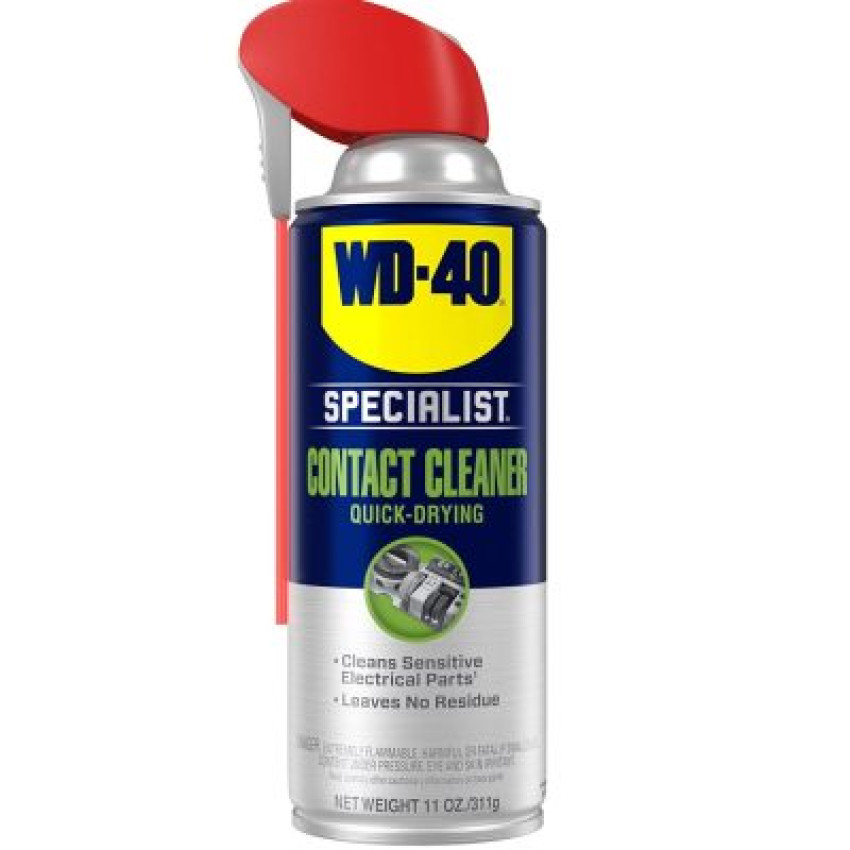
WD-40 is a popular household and industrial lubricant and solvent. The name "WD-40" stands for "Water Displacement, 40th formula," indicating that it was the 40th attempt to develop a successful product to displace water and prevent corrosion. It was first developed in 1953 by a company called Rocket Chemical Company, later renamed the WD-40 Company.
WD-40 is known for its versatility and is used for various purposes, including:
1. Lubrication:
WD-40 can be used to lubricate various moving parts such as hinges, locks, and tools to reduce friction and prevent squeaking.
2. Rust Prevention:
It can help protect metal surfaces from rust and corrosion by displacing moisture.
3. Cleaning:
WD-40 is effective at removing dirt, grime, and adhesives from various surfaces. It can be used to clean tools and equipment.
4. Loosening Stuck or Rusty Parts:
It can help loosen stuck or rusted bolts, nuts, and other fasteners, making it easier to remove them.
5. Removing Stickers and Labels:
WD-40 can be used to soften adhesive residue, making it easier to remove stickers and labels from surfaces.
6. Protecting and Restoring Surfaces:
It can be used to restore and protect plastic, vinyl, and rubber surfaces by providing a protective layer.
7. Silencing Squeaky Hinges:
WD-40 is often used to silence squeaky door hinges.
It's important to note that while WD-40 has many uses, it may not be the best choice for every application. For specific tasks, other lubricants or solvents may be more suitable. Always read the product's label and instructions to ensure it is used safely and effectively for the intended purpose.
Here's some additional information about WD-40:
1. Origins:
WD-40 was invented in 1953 by a chemist named Norm Larsen, who was attempting to create a rust-prevention solvent for the aerospace industry. He succeeded on his 40th attempt, hence the name WD-40, which stands for "Water Displacement, 40th Attempt."
2. Composition:
The exact formula of WD-40 is a closely guarded trade secret. However, it primarily consists of mineral oil, which provides lubrication, and various additives to enhance its performance, such as corrosion inhibitors, anti-wear agents, and other proprietary ingredients.
3. Applications:
· Household: WD-40 is commonly used in households for tasks like lubricating squeaky door hinges, locks, and bike chains, as well as removing stickers and adhesives.
· Automotive: It can be used to protect and lubricate various automotive components, such as door hinges, nuts and bolts, and to clean and shine tires and other surfaces.
· Industrial: In industrial settings, WD-40 is used for machine maintenance and corrosion prevention on metal equipment.
· DIY and Crafts: Crafters and DIY enthusiasts use it to remove glue, polish metal surfaces, and prevent rust on tools.
4. Cautions:
· WD-40 is not a long-lasting lubricant for heavy-duty or high-temperature applications. For those, a specialized lubricant is often more appropriate.
· It should be used with care around plastics, as it can damage or dissolve certain types of plastic over time.
· While it can help loosen rusted parts, it's not a substitute for a dedicated penetrating oil for extremely stubborn or corroded fasteners.
5. Safety:
· WD-40 is generally safe for skin contact, but prolonged exposure should be avoided.
· It is flammable and should be kept away from open flames or heat sources.
6. Environmental Impact:
The aerosol version of WD-40 contains volatile organic compounds (VOCs), which can contribute to air pollution. There are more environmentally friendly alternatives available for some applications.
7. Varieties:
WD-40 offers different formulations for various purposes, including specialized products like WD-40 Specialist, which is tailored for specific tasks like high-performance lubrication or electrical contact cleaning.



